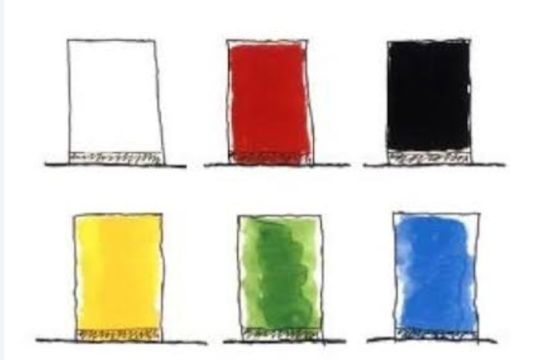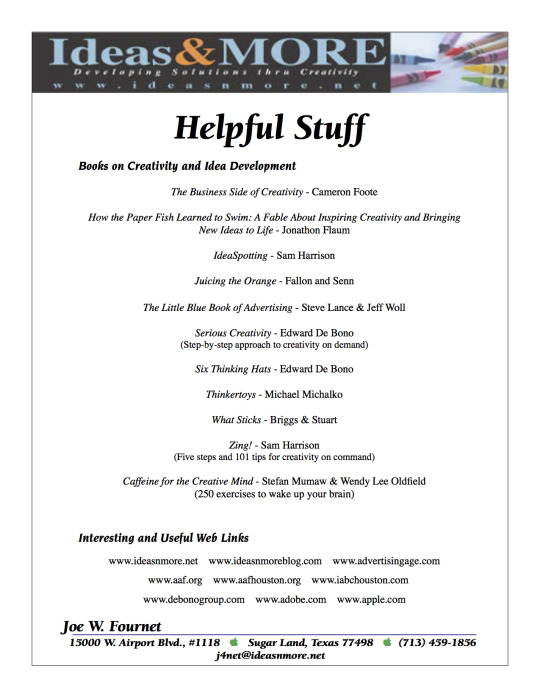#edward de bono
Explore tagged Tumblr posts
Text
Thinking as a Skill: "Yes, and..."
The investigations I have undertaken into 1980s British comedy that led me to the subject of my previous post have taken an intriguing turn into the study of the essence of comedy itself. What is it, exactly, that makes something funny? Furthermore, how is it that some people are better than others at the skill of constructing humor, especially in the moment?

View On WordPress
#adrian edmonson#alternative comedy#blackadder#edward de bono#john cleese#lateral thinking#rik mayall
2 notes
·
View notes
Text
''We have been taught to want the 'one truth'. Both ideas or methods cannot be 'right'. One must be right and the other must be wrong. This thinking is so deeply inbred in us that we regard it as inevitable and natural. Yet it is part of the 'belief system' arising from the sort of thinking determined by the Gang of Three (Socrates, Plato, Aristotle).''
- Edward de Bono, Parallel Thinking
2 notes
·
View notes
Photo

#quotes#Edward De Bono#creativity involves breaking#established patterns#look at things in a different way
2 notes
·
View notes
Text
Riflessioni sull'Oblìo Stratificato
https://www.tumblr.com/phillogbook/771460145726341120/ricordo-i-servizi-degli-anni-settanta-dove La funzione intellettuale, ci pensavo oggi, di fatto non esiste più. Non esiste in quanto interessata da un processo di esclusione iniziato ormai svariati anni fa, tramite un meccanismo di oblìo stratificato oggi definitivo. Ergo, un nuovo intellettuale deve sorgere come araba fenice dai residuati…
0 notes
Text
Metodología PNI: Positivo, Negativo e interesante
La metodología PNI (Positivo, Negativo, Interesante), desarrollada por Edward de Bono, es una técnica creativa que permite evaluar ideas y tomar decisiones de manera más efectiva. Esta herramienta se basa en analizar una idea desde tres perspectivas: Componentes del PNI Positivo: Identifica los beneficios y aspectos favorables de la idea. Negativo: Examina las desventajas y posibles problemas…
0 notes
Text
Six thinking hats
Edward de Bono Six thinking hats Edward de Bono Back in time when I was about to graduate to become a preeschool teacher, I needed to choose a topic for the final essay. I’ve always had multiple interests: art expression, creativity and personalized learning headed the list. In those days I came across the book “Six thinking hats” by Edward de Bono and it became the inspiration…

View On WordPress
0 notes
Text
Edward De Bono: Bar to new ideas
“The need to be right all the time is the biggest bar to new ideas. ” —Edward De Bono.

View On WordPress
0 notes
Text
Kick Start Your Creativity
Some times we all need a kick in the pants to get our creative juices to start flowing. Perhaps the attachments in this post will help in that regard. I wrote these years ago in preparation for some speaking engagements. Given their nature, I’d bet they’re still valid today. Hopefully making a ruckus, one blog post at a time! Be sure to check out my other blog, Joe’s Journey, for personal…

View On WordPress
0 notes
Text

Edward de Bono’s Six Thinking Hats
The six thinking hats is a method of group communication that was created to challenge unproductive and confrontational group issues, in order to make group activity more fluid and comfortable for all participants, while also using it to make sure the group stays on track. This tool is a form of "Parallel thinking" makes allowance for viewing something from every-which-way, every perspective to have confidence that every base is covered, with each colour being a different perspective. The six coloured hats are: White, Red, Black, Yellow, Green, and Blue.
The White Hat
The white hat is focused on objectivity and facts. When the white hat is in use everyone focuses directly on and exclusively on information. What information do we have? What information do we need? What questions need to be asked? An example of the white hat being used is at the start of group activity; consolidating knowledge and information to then see where to go from there, while also being sure that whatever the product of the group is factually correct.
The Red Hat
Fire, warmth. When wearing the red hat gut instinct and feeling are on the mind. Being headstrong and passionate about something. Emotions and personal views are considered. Being inclusive and having an eye on equality, while pulling your own weight and working hard. Having opinions heard and being mindful of them; healthy open forum to discuss things in a safe and honest light, which in turn becomes being evaluative of the group and its members.
The Black Hat
The black hat is interested in caution. Being careful and making sure that everything is in order. For example, understanding that the goal is difficult to achieve, deadlines that need to be observed, understanding the task at hand and if necessary, regrouping and communicating on what needs to be done or what needs to change, being sure of who is doing what, have a good sense of time management as well. Another thing to consider is the need for a Plan B – having backups of things and many copies.
The Yellow Hat
Think sunshine. Optimism. Benefits and positivity. The best possible scenario. The group may be looking to get the best marks, building relationships in the group, and therefore understanding the strengths and weaknesses of each other. Having a good sense of compassion and praise while also being aware of Positive constructive criticism and self-evaluation. The morale of a group is often fragile and is arguably one of the most important hats that may be forgotten. Having a positive mental attitude is helpful to the group dynamic and outcome.
The Green Hat
Dealing with creativity and new ideas, the green hat keeps the group motivated. This creativity could take the form of visuals like mind maps which are simple but effective. Having the confidence and ability to put forward different options and incorporate them. Having flexibility and working around people’s lives like being unable to meet or not having a lot of time for something, and for that to be anticipated, understood, and combined.
The Blue Hat
The blue hat is unique in that it is worn consistently by someone in the group. Not necessarily the leader, as it can be worn by everyone, but it is the concept of having an overview of things. The blue hat thinks about the whole overall process, it poses the problem at the beginning, and has the authority to finish the session and wrap things up. The blue hat is important in keeping the group on track and when need be, to make executive decisions when things go awry and point out when something is not working.
Overall, having this strategy when working in a group effectively manages the group and helps it run smoothly, while also being fluid and considering every possible perspective of a situation. If the hats are used, then, every "side of the story" as it were, equals every perspective which is what the hats facilitate for the purpose of effective communication and group work. When applied, however, this may work in theory but not necessarily in practice, especially in CLD Practice. The group dynamic that this creates may deteriorate and more than one hat may want to be the authority in a situation and too many voices means that it is all for naught. However, it can be adapted to suit whatever needs. It is only a theory and it holds little authority, so if one chooses to use this in their practice or otherwise, then perhaps only one or two hats need to be utilized and not go through all of them.
0 notes
Text
Lesson from backgammon master Mochy
🎲 Mochi is the number one backgammon player in the world. 🎲 Mochi’s initial moves appear to be bad but he does it to explore all possibilities before making a final move. 🎲 Mochi makes sure he sees all the possible moves to avoid missing the right one. 🎲 Knee-jerk moves, which are common among players, can result in missed opportunities to find the best move. 🎲 Mochi’s strategy is to look for…

View On WordPress
0 notes
Text
‘‘Argument freezes people into positions, and then they are imprisoned by those positions. Argument encourages cleverness at the expense of wisdom. It is very difficult to imagine a clever person arguing:
'You are right under those circumstances.' 'That may well happen some of the time.' 'That fits with the definition you hold.' 'If you choose those values you are right.'
Wisdom is more concerned with genuine exploration and has no need for the absolutes of hard-edged righteousness.’’
- Edward de Bono, Parallel Thinking
2 notes
·
View notes
Text

0 notes
Quote
It is better to have enough ideas for some of them to be wrong, than to be always right by having no ideas at all.
Edward de Bono
#Edward de Bono#quotes#life#love#important#tumblr#instagood#aesthetic#girl#literature#sad quotes#sad poem#zitate
1 note
·
View note
Text


oliver is reading edward de bono (originator of the term lateral thinking) and sinister street by compton mackenzie (coming of age about an english public school boy who goes to oxford, one of evelyn waugh's favourites) btw if u even care
#saltburn#i have been desperate to figure this out since october#can’t make out the book he’s holding when he overhears farleigh & felix :(#would download the 4k just to check but it’s 14gb and would take 3 days
288 notes
·
View notes
Text
Seis Sombreros para Pensar: Una Metodología de Edward de Bono
La Metodología de los Seis Sombreros para Pensar, desarrollada por el psicólogo y escritor maltés Edward de Bono, es una herramienta efectiva para fomentar el pensamiento crítico, la creatividad y la toma de decisiones en grupos o individuos. Edward de Bono, nacido en 1933, lanzó esta metodología en 1985. Desde entonces, ha sido ampliamente utilizada en diversos ámbitos para mejorar la calidad…

View On WordPress
#Edward de Bono#metodología#Pensamiento creativo#Pensamiento Lateral#Seis sombreros para pensar#Sombrero Amarillo#Sombrero Azul#Sombrero Blanco#Sombrero Negro#Sombrero Rojo#Sombrero Verde
0 notes